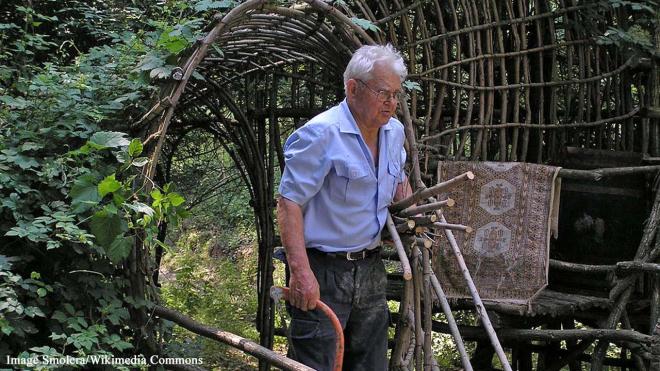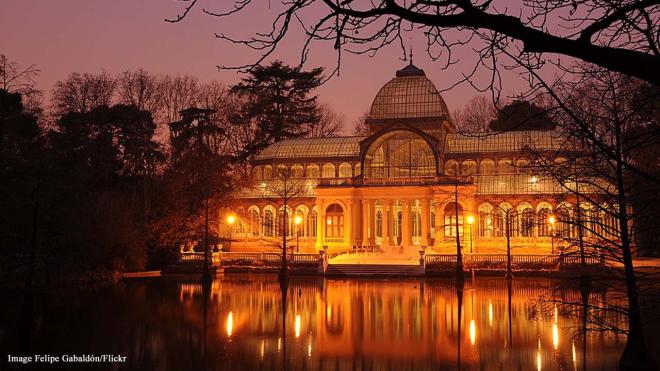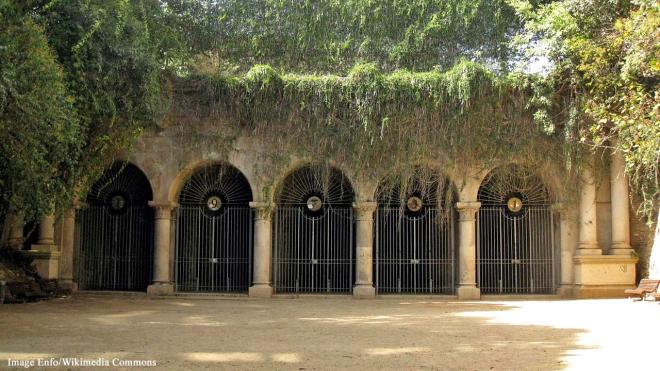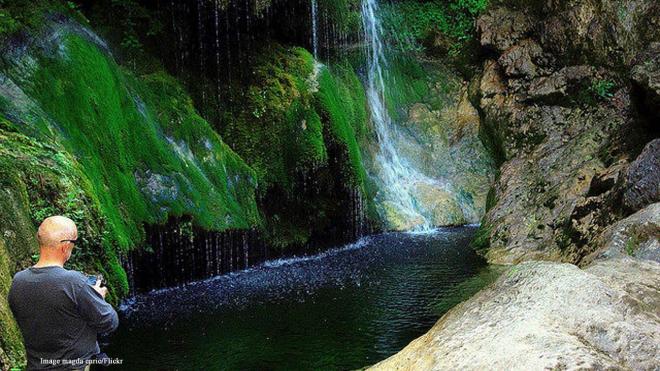Josep Pujiula Labyrinth - A-26 Argelaguer, Spain
Josep Pujilula I Vila began crafting a wooden labyrinth in 1980, along the Fluvia River in Catalonia, Spain. He then made several other structures in the area from the branches of trees, which he coiled into tunnels and walkways. He crafted a small, but livable cabin as well. Families enjoy exploring the labyrinth and wandering through the fascinating park. While the Spanish government made him dismantle the original, he is constantly working on another similar park.

Palacio de Cristal - Plaza de la Independencia, 7 Madrid, Spain
The Crystal Palace in Madrid, Spain was built to mirror a similar building in London. It is an architectural jewel recalling an era when places were built for their sheer beauty. Completed in 1887 on the edge of the lake in Buen Retiro Park, the glass and steel greenhouse exhibits plants and art in equal measure. Its beauty can be enjoyed from inside, or outside the building. The photo included here was taken just before dawn.

Jardins de Ca n'Altimira - Barcelona, Spain
Josep Altimira was an eccentric millionaire who in 1860 returned to Barcelona from Cuba. He created unusual gardens on his private property, including subterranean galleries, a zoo, a pillared hall and a hypostyle room. Rumours about the millionaire’s life included a story that he had trained an orang-utan as a waiter to serve drinks at his parties. The Freemason stock market investor had many businesses in Cuba, where he was known as the Count of Monte Cristo.

Les Escaules - Boadella i les Escaules, L'Alt Emporda, Spain
If you visit this spot, you are in good company, as the area shows that caves here have been inhabited for over 60,000 years. Close to the village of les Escaules, the Escaules castle stands on a hilltop which overlooks the Muga Valley. Below it, there is also the pretty Caula waterfall with a peaceful swimming lagoon.

Segovia Aqueduct - 4T Avenida Fernández Ladreda, Segovia, Spain
This beautiful piece of architecture dates back to around the 1st or 2nd century AD and is among the best preserved testaments to the skills of ancient Rome. Not only is the aqueduct so well-preserved, it continued to supply water to the city of Segovia from the Frio River well into the 20th century.

![The aqueduct in Segovia is one of the best-preserved examples of Roman architecture. [Image: Arian Zwegers/Flickr] The aqueduct in Segovia is one of the best-preserved examples of Roman architecture. [Image: Arian Zwegers/Flickr]](https://staticr1.blastingcdn.com/media/photogallery/2019/5/26/660x290/b_502x220x82/the-aqueduct-in-segovia-is-one-of-the-best-preserved-examples-of-roman-architecture-image-arian-zwegersflickr_2269725.jpg)

